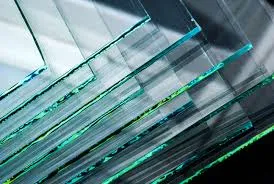The Science Behind Toughened Glass Breaking Understanding the Mechanics
Toughened glass, also known as tempered glass, is a type of safety glass that has been treated to increase its strength compared to normal glass. The process involves heating the glass to over 600 degrees Celsius and then rapidly cooling it. This method puts the surface of the glass into compression, making it much more resistant to breakage. However, when it does break, the behavior of toughened glass is quite different from that of regular glass, which raises important considerations for both safety and design.
The Science Behind Toughened Glass Breaking Understanding the Mechanics
Despite its enhanced strength, toughened glass is not invulnerable. Understanding how and why it breaks is essential for architects, engineers, and safety professionals. The glass can fail due to several factors, including thermal stress, manufacturing defects, or external impacts. For instance, rapid temperature changes may cause thermal shock, leading to breakage. This is particularly relevant in environments where the glass is exposed to direct sunlight on one side and shaded on the other.
toughened glass breaking
Moreover, small flaws introduced during the manufacturing process or from handling can serve as stress concentrators, making the glass more susceptible to breaking. It’s crucial for manufacturers to adhere to strict quality control measures to minimize these defects. Regular inspections and certification processes are also beneficial to ensure the structural integrity of toughened glass in various applications, from commercial buildings to automobiles.
The applications of toughened glass are diverse, ranging from shower doors to facades of skyscrapers, and its safety features make it a popular choice. Designers and architects often utilize toughened glass for its aesthetic appeal and safety benefits; however, it’s vital for them to consider the potential risks associated with breakage in their designs.
In conclusion, while toughened glass provides significant advantages over standard glass, understanding the mechanics of how it breaks is essential for utilizing it effectively and safely. The ideal approach is to balance its benefits with an awareness of the factors that contribute to its failure. With proper engineering, quality control, and appropriate applications, toughened glass can offer both beauty and safety in modern design.
 Afrikaans
Afrikaans  Albanian
Albanian  Amharic
Amharic  Arabic
Arabic  Armenian
Armenian  Azerbaijani
Azerbaijani  Basque
Basque  Belarusian
Belarusian  Bengali
Bengali  Bosnian
Bosnian  Bulgarian
Bulgarian  Catalan
Catalan  Cebuano
Cebuano  Corsican
Corsican  Croatian
Croatian  Czech
Czech  Danish
Danish  Dutch
Dutch  English
English  Esperanto
Esperanto  Estonian
Estonian  Finnish
Finnish  French
French  Frisian
Frisian  Galician
Galician  Georgian
Georgian  German
German  Greek
Greek  Gujarati
Gujarati  Haitian Creole
Haitian Creole  hausa
hausa  hawaiian
hawaiian  Hebrew
Hebrew  Hindi
Hindi  Miao
Miao  Hungarian
Hungarian  Icelandic
Icelandic  igbo
igbo  Indonesian
Indonesian  irish
irish  Italian
Italian  Japanese
Japanese  Javanese
Javanese  Kannada
Kannada  kazakh
kazakh  Khmer
Khmer  Rwandese
Rwandese  Korean
Korean  Kurdish
Kurdish  Kyrgyz
Kyrgyz  Lao
Lao  Latin
Latin  Latvian
Latvian  Lithuanian
Lithuanian  Luxembourgish
Luxembourgish  Macedonian
Macedonian  Malgashi
Malgashi  Malay
Malay  Malayalam
Malayalam  Maltese
Maltese  Maori
Maori  Marathi
Marathi  Mongolian
Mongolian  Myanmar
Myanmar  Nepali
Nepali  Norwegian
Norwegian  Norwegian
Norwegian  Occitan
Occitan  Pashto
Pashto  Persian
Persian  Polish
Polish  Portuguese
Portuguese  Punjabi
Punjabi  Romanian
Romanian  Russian
Russian  Samoan
Samoan  Scottish Gaelic
Scottish Gaelic  Serbian
Serbian  Sesotho
Sesotho  Shona
Shona  Sindhi
Sindhi  Sinhala
Sinhala  Slovak
Slovak  Slovenian
Slovenian  Somali
Somali  Spanish
Spanish  Sundanese
Sundanese  Swahili
Swahili  Swedish
Swedish  Tagalog
Tagalog  Tajik
Tajik  Tamil
Tamil  Tatar
Tatar  Telugu
Telugu  Thai
Thai  Turkish
Turkish  Turkmen
Turkmen  Ukrainian
Ukrainian  Urdu
Urdu  Uighur
Uighur  Uzbek
Uzbek  Vietnamese
Vietnamese  Welsh
Welsh  Bantu
Bantu  Yiddish
Yiddish  Yoruba
Yoruba  Zulu
Zulu 

